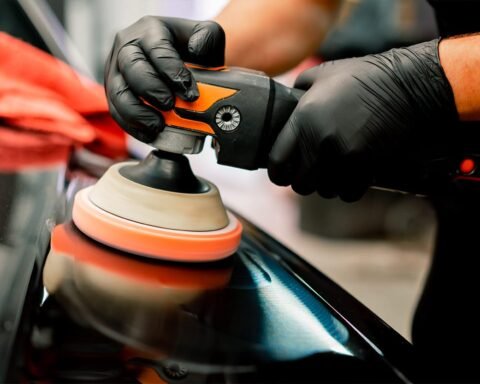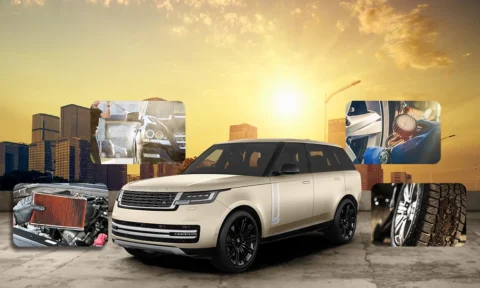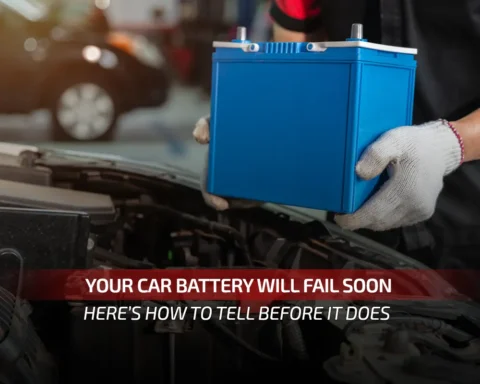Does your steering wheel feels off-center or your car starts pulling to one side this summer?
In extreme heat—like much of the USA sees in July and August—your vehicle’s alignment can shift more than you think.
High pavement temperatures, long road trips, and tire expansion all play a role.
So let’s break down the key wheel alignment tips for hot weather in USA, especially if you’re driving in states like Arizona, Texas, or Florida.
Get Alignment Checked Before and After a Road Trip
Planning a summer drive from Los Angeles to Vegas or up the Florida coast?
Get your alignment inspected before you leave, and once again if you drove through rough roads or construction zones.
Even small jolts at high speeds can knock the wheels out of parallel, especially if your tires are softened from heat.
Why does hot weather affect wheel alignment?
Heat causes your tires and suspension components to expand, which can throw your alignment slightly out of spec.
It’s subtle but builds over time—especially with long-distance driving.
Park Smart to Avoid Hot Pavement Stress
Repeated parking on superheated asphalt, especially with low tire pressure, increases the risk of tire cupping and premature wear—two signs of misalignment.
If you can, park in shaded spots or on cooler concrete surfaces.
This is particularly relevant in Texas suburbs and desert towns, where midday temperatures peak.
What signs suggest my alignment is off?
Your car may pull to one side, the steering wheel might not center properly, and tire wear could become uneven.
Vibrations at highway speeds are also a red flag.
Keep Tire Pressure in Check Weekly
Tire pressure rises about 1 PSI for every 10°F increase.
So in summer, tires naturally expand—potentially throwing off your alignment even if everything else is fine.
In New Mexico, Nevada, or southern California, check pressure weekly.
Use your car manufacturer’s recommended cold PSI—not the tire’s max rating.
How often should I check alignment in the summer?
If you live in a hot climate or take a summer road trip, get your alignment checked once at the start of the season, and again if you hit potholes or notice handling changes.
Rotate Tires Every 5,000 Miles in Summer
Heat magnifies any existing alignment issues, making irregular wear patterns show up faster than usual.
Stick to a 5,000-mile tire rotation schedule in summer months to spot early signs of camber or toe issues.
In Georgia, where summer storms can also flood roads, hitting potholes after rain increases alignment risk.
Does alignment affect fuel economy?
Yes. Misaligned wheels create drag, which means your engine has to work harder.
This can reduce your MPG by up to 10%, especially on highways.
Watch for Expansion Joint Wear on Highways
Interstate highways—especially in places like Colorado or Nevada—use expansion joints to cope with heat.
Over time, these joints sink or crack.
If you drive a lot on older highways, especially in hotter states, you’re more likely to develop gradual misalignment.
Can I DIY wheel alignment checks?
While full alignment requires pro equipment, you can spot basic issues.
Check if your steering wheel is crooked when driving straight or if tires are wearing unevenly.
The Hidden Problem Most Drivers Ignore in Summer
When people think of hot weather car prep, they usually focus on A/C performance or engine cooling.
But wheel alignment quietly suffers under the summer sun—especially across southern and western U.S. states.
In places like Phoenix, where asphalt can reach 160°F, metal suspension components expand enough to shift geometry slightly out of spec.
This can mess with your handling, tire wear, and even fuel economy.
Heat Doesn’t Just Affect Engines
To be honest, summer was only enjoyable when I was a kid.
As an adult, I do not like summer at all. There are hundreds of things to take care of, my car included!
The wheel alignment takes a hit from every expansion joint, pothole, and long, heat-soaked drive. What helps me with these things is to be prepared in advance. Knowing what to do, but more importantly, what NOT to do.





